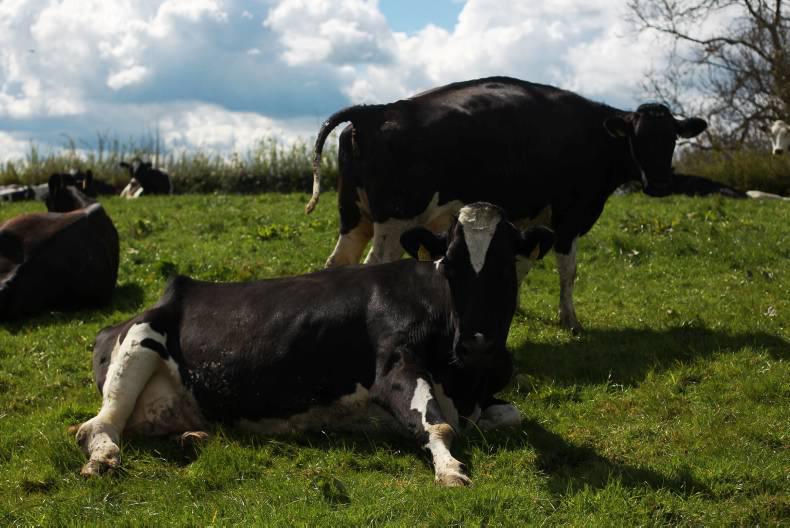We have received a number of calls from farms where one or two cows appear to be quite bright and in good form, but haven’t finished meal, aren’t grazing as well as they should and have a reduced milk yield. Often when we examine the cow, her rumen is slack and she has a scour that has undigested grass fibres in it.
Where a grass shortage still exists, this has to be made up by continuing to feed moderately high levels of concentrates. The levels of starch in the 3kg to 4kg per day being fed would usually be tolerated, but the usual fibre from grass is missing.
These cases where the cow is sick are the tip of the iceberg. The most common and easily overlooked sign is a drop in butterfat and an increase in protein. The ratio should be around 1.15:1. If it starts to drop to 1:1 or below, then there is a significant acidosis problem, which will impact on productivity.
Bulk milk protein and butterfat is an average of the herd and quite a lot of individual cows may have altered ratios without any definite change in the bulk ratio.
If you are milk recording, it is possible to calculate what percentage of cows have an altered ratio.
Acidosis can also contribute to a number of other problems, such as reduced feed intake, lameness, stomach ulcers, digestive disorders such as LDAs, suppression of the immune system and occasionally liver abscesses.
One approach to prevent it is to add pH buffers, such as bicarbonate or calcified seaweed to the diet, but these can be expensive and require labour for management and do not address the underlying lack of fibre in the diet.
The second, simpler, way is just to add fibre to the diet. With a diet feeder, offering a maize and straw mix will add energy and fibre and is very palatable. Alternatively, simply add molasses to straw to improve its palatability.
Most farmers producing milk from grass do not have diet feeder. Fibre in the form of hay, silage or straw can be offered at the feed barrier or round feeders. Keeping them in for an hour after milking can help.
Kevin Meaney works with Southview Veterinary Hospital in Clonmel, part of the XL Vets, a group of progressive practices working towards a better future. See XLvets.ie






 This is a subscriber-only article
This is a subscriber-only article










SHARING OPTIONS: